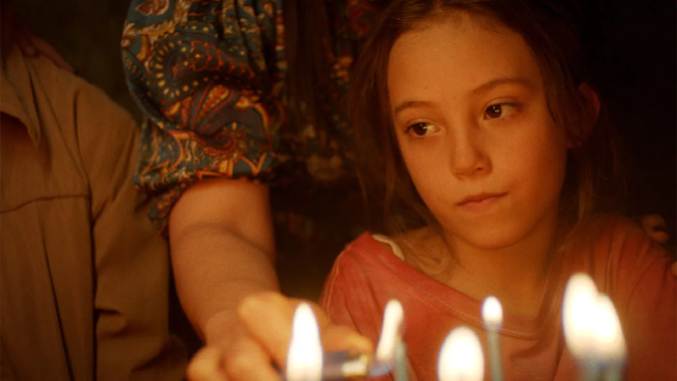Tótem Is a Nuanced Portrayal of a Child Grieving

Sol (Naíma Sentíes), the little girl at the heart of Lila Avilés’ Tótem, is obsessed with the bugs and birds that stretch across her family’s property. She seeks them out as fellow stragglers, trapped on the edge of the action. Like them, she skulks through dusty rooms and lurches across sunbaked cement—ignored by the adults and spotlighted by the curious camera.
Tótem follows Sol and her father Napo (Juan Francisco Maldonado), who is terminally ill and celebrating what will likely be his final birthday. The details of this disease slide into obscurity, colored by our protagonist’s age-appropriate ignorance. Avilés is more concerned with the shape and sound of childhood, and across the 95 minutes (which covers one evening in the lives of this disjointed cast), she offers a nuanced take on the disparity and complication of being young in a world built to amplify grown-up problems.
Their home is rife with movement and action, stirring with human and (the aforementioned) non-human life. Avilés almost treats this setting as a challenge, desperate to find ways of exploring each character’s internality amidst the chaos. It is a testament to the filmmaker’s skill that Sol’s perspective is prized above all. Her wide-eyed curiosity pours from the screen, the mystery of the family’s inner workings reflected in her thoughtful expressions. It is in Sentíes’ deeply felt performance that Avilés unknots the film’s tangled questions: What do adults remember about being a child? What do they forget? Which of these forgotten memories can be re-accessed? Most importantly, which elements of adulthood are comprehensible to the children who wander through, haplessly avoiding the interpersonal bombs which threaten to destabilize everything?
At one point, Napo is describing the image he sees in the seeds scattered across his crumpled bedspread: “I see the horizon. At the beach. There…where the view ends.” It is an obvious reference to his impending demise, but it is also the opposite of the film’s aesthetic sensibilities. Rather than wide-open scenery, Avilés shoots her story in a series of close-ups, with the layout of the house a labyrinth of secret dealings and shadowy corners. Answers are evasive, stretching ominously in the background, and Tótem traverses this maze through the eyes of these characters, whose vision is narrowed by an oppressive grief.
-

-

-

-

-

-

-

-

-

-

-

-

-

-

-

-

-

-

-

-

-

-

-

-

-

-

-

-

-

-

-

-

-

-

-

-

-

-

-

-








































